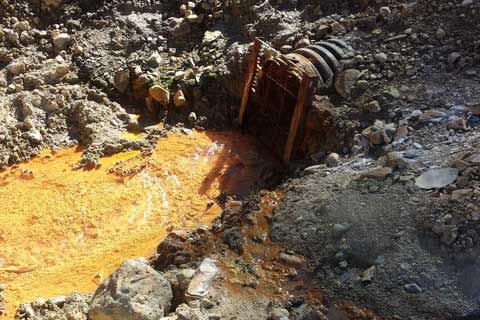Promising New Technology Cleans Mine Wastewater Near Silverton
Published on by Water Network Research, Official research team of The Water Network in Technology
High in the San Juan Mountains, north of Silverton, a small, makeshift trailer is churning with new, promising technology that may have implications for treating mine pollution throughout the West.
By Jonathan Romeo

Source: Green Age Technologies
“It’s a totally different concept,” said Bill Simon of the Animas River Stakeholders Group. “If indeed the process works the way it’s said to work, it should be very beneficial in saving money and reducing the carbon footprint of treating mine wastewater.”
Texas-based Green Age Technologies, was adamant its new technology could be a game-changer after the Gold King Mine spill, which sent 3 million gallons of mine waste down the Animas and San Juan rivers, caught national attention.
Green Age has been given the green light to embark on a pilot project for two weeks this summer to test its water treatment technology on highly polluted waters from a mine tunnel north of Silverton.
The company’s patented technology, so far, has shown potential almost too good to be true, several officials said, and has many wondering whether this could be the new standard for treating acidic discharges from leaking mines.
“It’s a process we had never heard of,” Peter Butler said. “I don’t think even they understand what they were doing.”
An efficient, effective system
For years, the standard for treating acidic mine wastewater has been a lime treatment plant. The process is highly effective at improving water quality, but has major downsides. Mostly, it’s expensive.
A lime treatment plant adds lime to polluted waters, which raises the pH so that toxic, dissolved metals become solids and can settle in settling ponds.
However, what’s left is a massive amount of sludge. A small amount of the sludge, about 5 percent, is the actual detrimental metals. The other 95 percent is the lime.
The cost – and carbon footprint – for hauling the lime in, removing the sludge and keeping a plant in operation adds up. The temporary plant in Silverton, which cost $1.5 million to build, costs an estimated $1,040,000 a year to operate.
All this, in perpetuity.
Green Age, on the other hand, uses a system that requires no chemicals and relatively low amounts of energy. And, the metals that are captured can be repurposed for bricks, roads and other uses.
At the Ouray mine, for instance, Green Age’s plant was capturing 100 pounds of aluminum a day. “That’s a lot of cans,” said Evalds, hinting at the opportunity to capitalize on those resources.
Cavitation, which Evalds calls the “secret sauce” of the water treatment plant, is a moderately simple process, relative to the world of physicists. It’s not so easy to spell out in laymen terms.
Essentially, Green Age’s technology implodes molecules, which gives off heat and pops the solids out of the water.
Early testing showed the process removed 90 to 95 percent of undesirable metals out of the water.
Read full article and watch a video: The Durango Herald
Media
Taxonomy
- Wastewater Use
- Decontamination
- Heavy Metal Removal
- Water Reuse & Recycling
- Technology
- Reuse
- Contaminant Movement Mapping
- Mine Water Management
- Waste Management